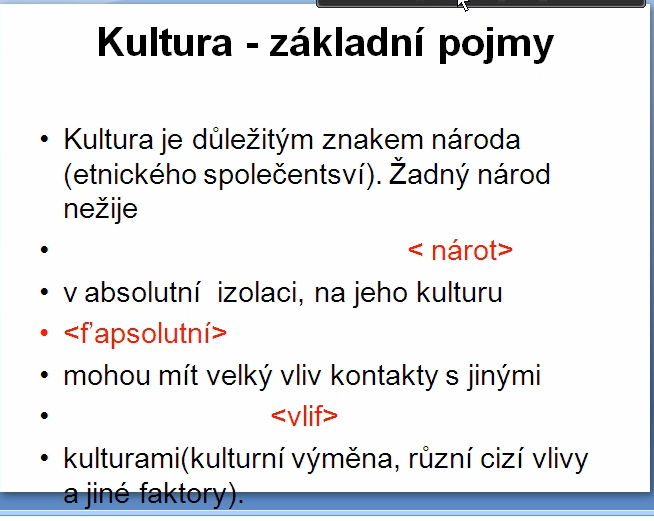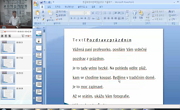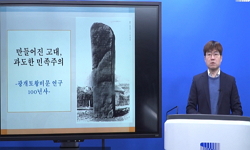“체코인이면 곧 음악가(Co Cech, to Muzikan)"라고 할 정도로 체코인들은 음악을 좋아하고 또 음악적 재능이 뛰어나다. 그러나 이런 속담에 담겨 있는 또 다른 의미는 19세기 말에 나타났던 민족...
http://chineseinput.net/에서 pinyin(병음)방식으로 중국어를 변환할 수 있습니다.
변환된 중국어를 복사하여 사용하시면 됩니다.
- 中文 을 입력하시려면 zhongwen을 입력하시고 space를누르시면됩니다.
- 北京 을 입력하시려면 beijing을 입력하시고 space를 누르시면 됩니다.
체코의 음악과 민족정체성 형성간의 상관성 연구 = A Study on the Formation of Czech National Identity through the National Musics in the Period of National Revival
한글로보기https://www.riss.kr/link?id=A82446257
- 저자
- 발행기관
- 학술지명
- 권호사항
-
발행연도
2005
-
작성언어
-
-
주제어
체코 ; 민족부흥운동 ; 민족주의 ; 국민악파 ; 스메타나 ; 리부셰 ; 나의 조국 ; Czech ; National revival ; Nationalism ; Smetana ; Czech legends
-
KDC
349
-
자료형태
학술저널
- 발행기관 URL
-
수록면
179-204(26쪽)
- 제공처
-
0
상세조회 -
0
다운로드
부가정보
국문 초록 (Abstract)
“체코인이면 곧 음악가(Co Cech, to Muzikan)"라고 할 정도로 체코인들은 음악을 좋아하고 또 음악적 재능이 뛰어나다. 그러나 이런 속담에 담겨 있는 또 다른 의미는 19세기 말에 나타났던 민족부흥운동의 역사에서 음악이 체코인들에게 끼친 지대한 영향에 관한 측면이다. 스메타나 등은 ‘나의 조국’이나 ‘리부셰’,‘팔려간 신부’등을 통해 체코인들의 과거와 현재 그리고 미래를 보여주었고 그것은 곧 그들이 스스로의 정체성을 찾아가는 과정과 일치했다. 체코의 음악은 곧 민족혼 그 자체이며, 음악 속에서 스스로의 모습을 발견하는 것도 바로 이러한 음악의 역할 때문이다.
다국어 초록 (Multilingual Abstract)
The late 19th century saw the advance of the National Revival in the Czech Lands. The greatest display of these revivalist tendencies in the spirit of Romanticism appeared primarily in Czech operas and symphonic poems such as ‘Libuse’ and ‘Ma Vl...
The late 19th century saw the advance of the National Revival in the Czech Lands. The greatest display of these revivalist tendencies in the spirit of Romanticism appeared primarily in Czech operas and symphonic poems such as ‘Libuse’ and ‘Ma Vlast'. One of the most important musicians of this period was Bedfich Smetana. At that time Smetana wanted to show the Czech what its national characters were and how glorious it’s future will be by praising the Czech national cultures and legends. He composed ‘Prodana nevesta(The Bartered Bride)’ and after that he completed his masterpiece opera ‘Libuse’. The operas emerged from his awareness of his responsibility to his nation and his firm belief in its future. Despite of losing hearing he managed to realize his long-held creative project, that was to celebrate his homeland and nation with a cycle of symphonic poems ‘Ma vlast(My Homeland)’ in 1874. It is consisted of 6 parts in which are Vysehrad, Vltava(The Moldau), Sarka, Z ceskYch luhu a haju(From Czech Fields and Groves), Tabor and Blanik. In those symphonic poems Smetana revealed his love toward the Czech nation and believed in its glorious future. And at the same time he intended to show the origin of his nation, the national identity, ceaseless efforts to survive and even the immortality of his nation. In doing so, he inspired patriotism and national self-esteem into his dear people and awakened to assert their right to live as people with equal rights and freedoms.
목차 (Table of Contents)
- Ⅰ. 들어가는 말
- Ⅱ. 체코 음악의 흐름고 민족 음악
- Ⅲ. 교향시 '나의 조국'과 체코의 전설
- Ⅳ. 맺는 말
- Ⅰ. 들어가는 말
- Ⅱ. 체코 음악의 흐름고 민족 음악
- Ⅲ. 교향시 '나의 조국'과 체코의 전설
- Ⅳ. 맺는 말
동일학술지(권/호) 다른 논문
-
- 아시아·중동부유럽학회
- 김지영(Kim Ji-Young)
- 2005
-
- 아시아·중동부유럽학회
- 이상협(Lee, Sang-Hyup)
- 2005
-
- 아시아·중동부유럽학회
- 김종석(Kim Jong-Suck)
- 2005
-
폴란드의 민속 축제 라이코닉(Lajkonik)의 유래 연구
- 한국동유럽발칸학회
- 최성은(Choi
- 2005




 스콜라
스콜라






